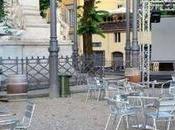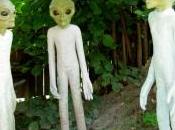

Image courtesy Wikipedia
Eruptions from Pacaya, one of Guatemala’s most active volcanoes, are frequently visible from Guatemala City, the nation’s capital.
Pacaya is a complex basaltic volcano constructed just outside the southern topographic rim of the 14 x 16 km Pleistocene Amatitlán caldera. A cluster of dacitic lava domes occupies the southern caldera floor. The post-caldera Pacaya massif includes the Cerro Grande lava dome and a younger volcano to the SW. Collapse of Pacaya volcano about 1100 years ago produced a debris-avalanche deposit that extends 25 km onto the Pacific coastal plain and left an arcuate somma rim inside which the modern Pacaya volcano (MacKenney cone) grew. A subsidiary crater, Cerro Chino, was constructed on the NW somma rim and was last active in the 19th century.
During the past several decades, activity at Pacaya has consisted of frequent strombolian eruptions with intermittent lava flow extrusion that has partially filled in the caldera moat and armored the flanks of MacKenney cone, punctuated by occasional larger explosive eruptions that partially destroy the summit of the cone.
After the last caldera-forming eruption 23,000 years ago, several smaller vents within and around the caldera have seen eruptive activity. Pacaya is the largest post-caldera volcano, and has been one of Central America’s most active volcanoes over the last 500 years. It has erupted at least 23 times since the Spanish conquest, producing basalt and basaltic andesite.
About 1,100 years ago, the volcano’s edifice collapsed, causing a huge landslide. Deposits from the landslide travelled about 25 kilometres (16 mi) from the volcano down to the Pacific coastal plain. The landslide left a large crater, within which the current active cone has grown. The presence of a magma chamber at shallow depths beneath Pacaya means that distortion of the cone leading to instability and future landslides remains a hazard to the surrounding areas.
Historic Eruptions
The eruption history is very well documented and goes back to approx. 400 AD. A full overview can be found here.
Recent eruptions
With its almost continuous activity, the volcano has been a popular location for tourism. Pacaya is easily accessible from Guatemala City and from Antigua. The volcano and surrounding area now lie within the Pacaya National Park, which was created to supervise and protect tourism in this region. The Pacaya Park generates its income from tour groups who are charged a small fee to enter the park.
In 1998, several explosive eruptions emitted lava, debris and ash columns with a height of 1500 m – 5000 m. Ash fall affected nearby cities including Guatemala city and La Aurora airport.
A lava lake was formed during the 2000-2001 active period.
During 2006, a slight increase in Pacaya’s volcanic activity brought about the creation of several lava rivers that slowly flow down its slope. Word about these phenomena spread, and local tourism increased significantly.
On May 27, 2010, the Pacaya volcano erupted, followed in several tremors. At approximately 20:00 hours there was a strong eruption ejecting debris and ash columns up to 1500 meters.
Ash rained down in many Guatemalan cities to the northwest of the volcano, including Guatemala City. The volcanic ash fall pelted Guatemala City, and the international airport, La Aurora. The National Coordinator for Disaster Reduction (CONRED) declared a red alert for the communities near the volcano, and recommended the evacuation of some of them. Noti7 reporter Anibal Archila, one of the first to cover the event, was reported killed by volcanic debris.
President Álvaro Colom declared a state of calamity in the region adjacent to the volcano, and the Ministry of Education closed the schools in the departments of Guatemala, Escuintla and Sacatepequez. Heavy rainfall from Tropical Storm Agatha worsened the emergency situation, causing lahars, landslides and widespread flooding across the country. However, people working in coffee fields considered the rain brought by the storm to be helpful, removing ash from their trees





Earthquakes
The list below shows the earthquake activity in a narrow radius around the volcano. Unfortunately we are only able to report the stronger earthquakes reported by the most important seismological agencies in the world. Our earthquakes database began registering early 2012.

SRC Location UTC Date/time M D INFORMATION
ER Seismicity Startup Record Jan 01 00:00 AM 0.1 0.1 MAP
Enter Email (not compulsory)
Your current location
MMI II (Very weak shaking)
?
People :
Felt by persons at rest, on upper floors or favorably placed.
MMI III (Weak shaking)
?
People :
Felt indoors; hanging objects may swing, vibration similar to passing of light trucks, duration may be estimated, may not be recognized as an earthquake.
MMI IV (Light shaking)
?
People :
Generally noticed indoors but not outside. Light sleepers may be awakened. Vibration may be likened to the passing of heavy traffic, or to the jolt of a heavy object falling or striking the building.
Fittings :
Doors and windows rattle. Glassware and crockery rattle. Liquids in open vessels may be slightly disturbed. Standing motorcars may rock.
Structures :
Walls and frames of buildings, and partitions and suspended ceilings in commercial buildings, may be heard to creak.
MMI V (Moderate shaking)
?
People :
Generally felt outside, and by almost everyone indoors. Most sleepers awakened. A few people alarmed.
Fittings :
Small unstable objects are displaced or upset. Some glassware and crockery may be broken. Hanging pictures knock against the wall. Open doors may swing. Cupboard doors secured by magnetic catches may open. Pendulum clocks stop, start, or change rate.
Structures :
Some large display windows cracked. A few earthenware toilet fixtures cracked.
MMI VI (Strong shaking)
?
People
Felt by all. People and animals alarmed. Many run outside. Difficulty experienced in walking steadily.
Fittings :
Objects fall from shelves. Pictures fall from walls. Some furniture moved on smooth floors, some unsecured free-standing fireplaces moved. Glassware and crockery broken. Very unstable furniture overturned. Small church and school bells ring. Appliances move on bench or table tops. Filing cabinets or “easy glide” drawers may open (or shut).
Structures :
Slight damage to buildings with low standard. Some stucco or cement plaster falls. Large display windows broken. Damage to a few weak domestic chimneys, some may fall.
Environment :
Trees and bushes shake, or are heard to rustle. Loose material may be dislodged from sloping ground, e.g. existing slides, talus slopes, shingle slides.
MMI VII (Very strong shaking)
?
People
General alarm. Difficulty experienced in standing. Noticed by motorcar drivers who may stop.
Fittings :
Large bells ring. Furniture moves on smooth floors, may move on carpeted floors. Substantial damage to fragile contents of buildings.
Structures :
Unreinforced stone and brick walls cracked. Low standard buildings cracked with some minor masonry falls. A few instances of damage to buildings of ordinary workmanship. Unbraced parapets, unbraced brick gables, and architectural ornaments fall. Roofing tiles, especially ridge tiles may be dislodged. Many unreinforced domestic chimneys damaged, often falling from roof-line. Water tanks Type I burst. A few instances of damage to brick veneers and plaster or cement-based linings. Unrestrained water cylinders (hot-water cylinders) may move and leak. Some common windows cracked. Suspended ceilings damaged.
Environment :
Water made turbid by stirred up mud. Small slides such as falls of sand and gravel banks, and small rock-falls from steep slopes and cuttings. Instances of settlement of unconsolidated or wet, or weak soils. Some fine cracks appear in sloping ground. A few instances of liquefaction (i.e. small water and sand ejections).
MMI VIII (Severe shaking)
?
People
Alarm may approach panic. Steering of motorcars greatly affected.
Structures :
Low standard buildings heavily damaged, some collapse. ordinary workmanship buildings damaged, some with partial collapse. Reinforced masonry or concrete buildings damaged in some cases. A few instances of damage to buildings and bridges designed and built to resist earthquakes. Monuments and pre-1976 elevated tanks and factory stacks twisted or brought down. Some pre-1965 infill masonry panels damaged. A few post-1980 brick veneers damaged. Decayed timber piles of houses damaged. Houses not secured to foundations may move. Most unreinforced domestic chimneys damaged, some below roof-line, many brought down.
Environment :
Cracks appear on steep slopes and in wet ground. Small to moderate slides in roadside cuttings and unsupported excavations. Small water and sand ejections and localized lateral spreading adjacent to streams, canals, lakes, etc.
MMI IX (Violent shaking)
?
Structures
Many low standard buildings destroyed. Ordinary workmanship buildings heavily damaged, some collapse. Reinforced masonry or concrete buildings damaged, some with partial collapse. Buildings and bridges designed and built to resist earthquakes damaged in some cases, some with flexible frames seriously damaged. Damage or permanent distortion to some buildings and bridges, designed and built to normal use standards. Houses not secured to foundations shifted off. Brick veneers fall and expose frames.
Environment :
Cracking of ground conspicuous. Landsliding general on steep slopes. Liquefaction effects intensified and more widespread, with large lateral spreading and flow sliding adjacent to streams, canals, lakes, etc.
Write your experience and/or additional text here (max. 500 characters)







